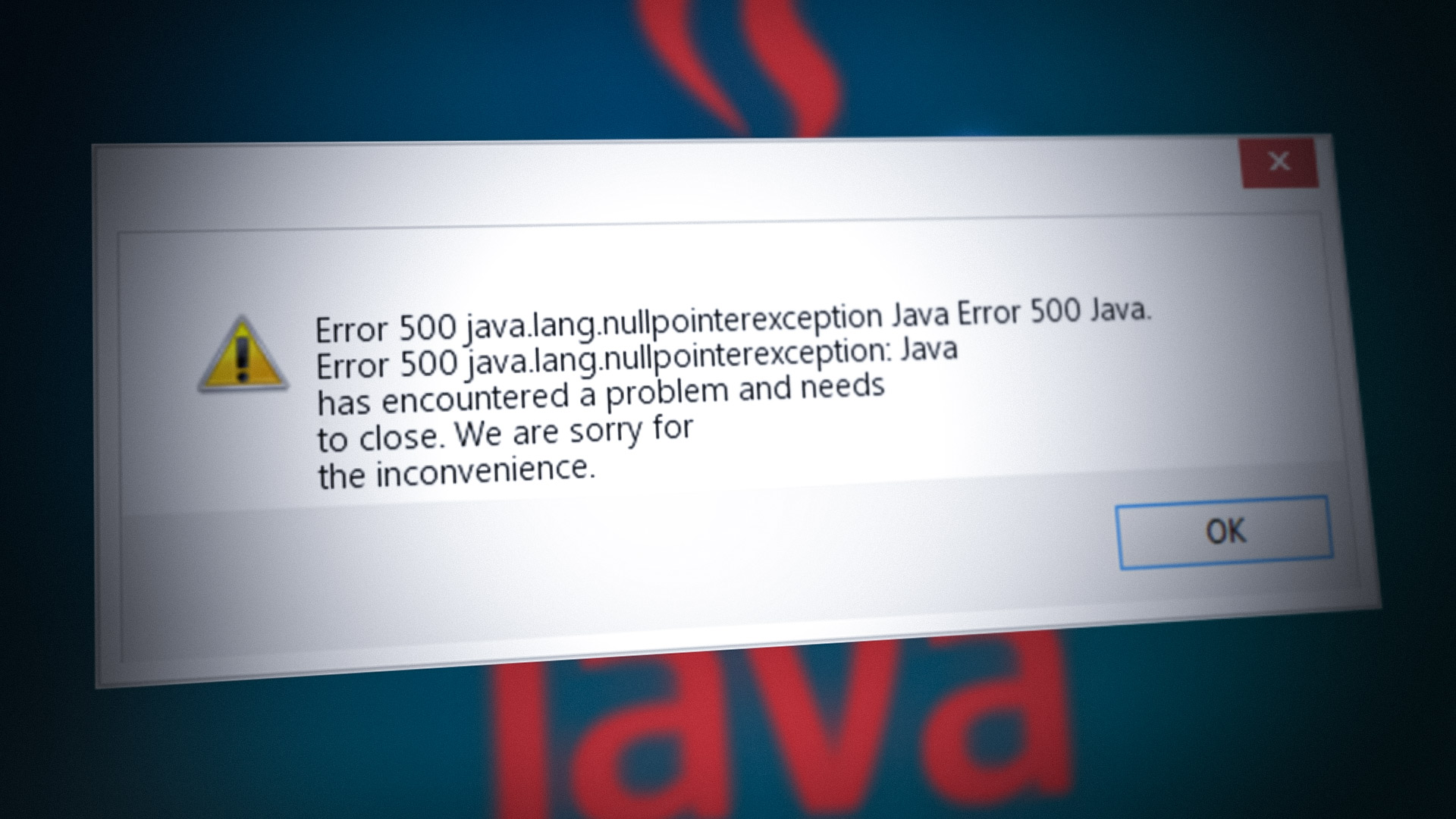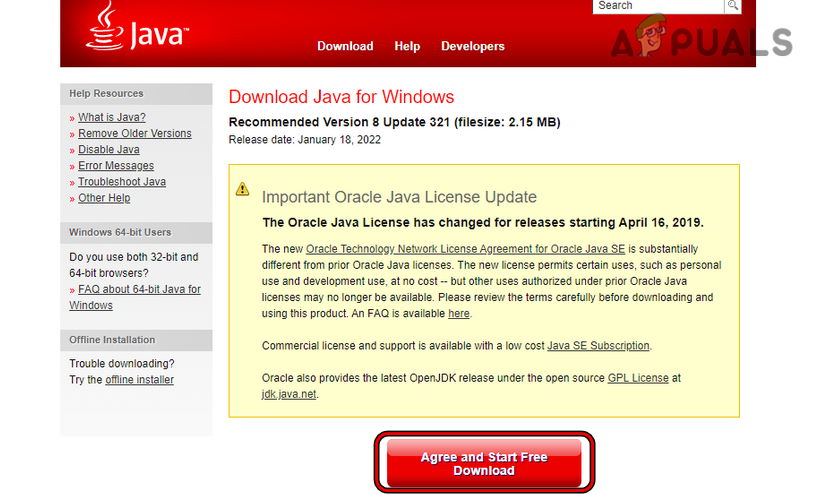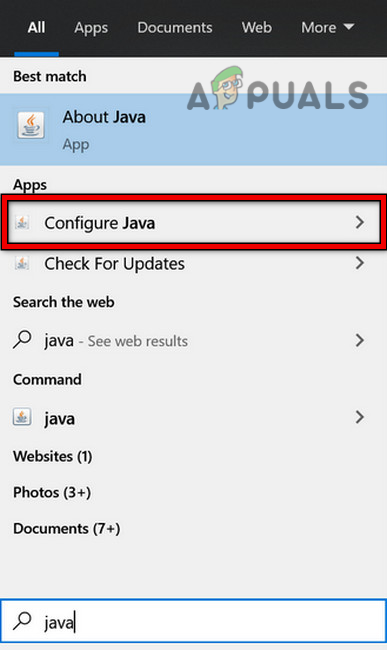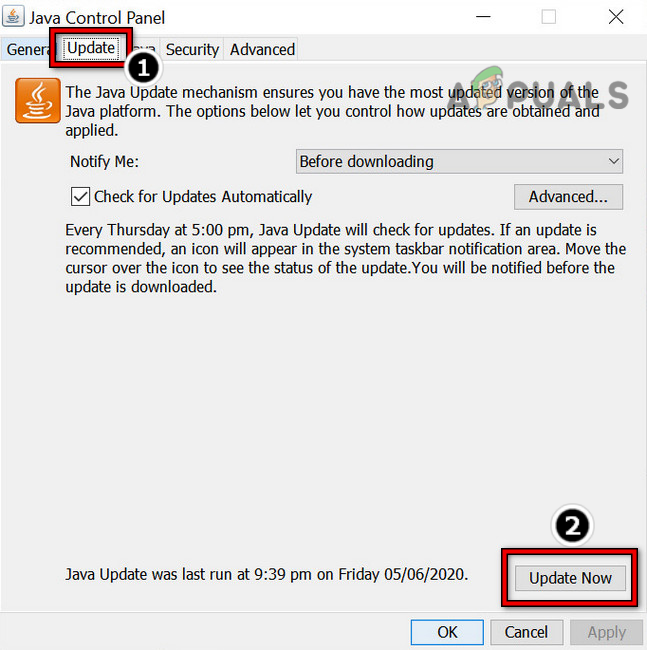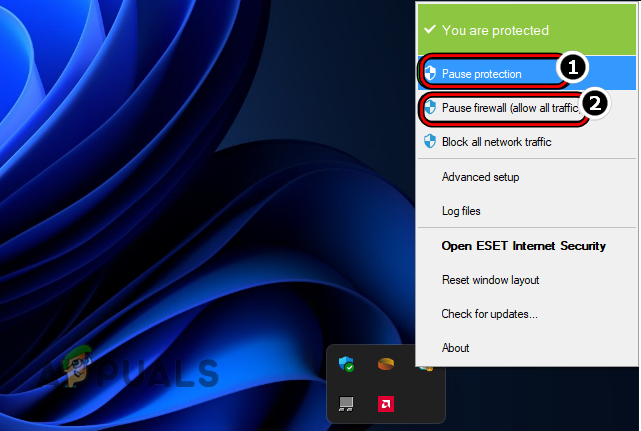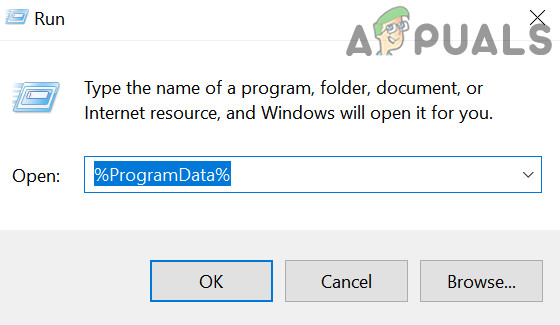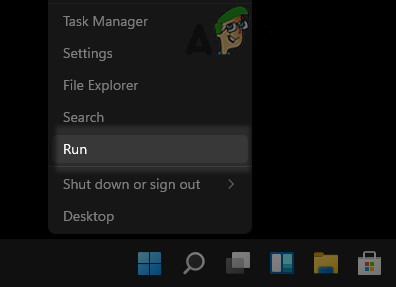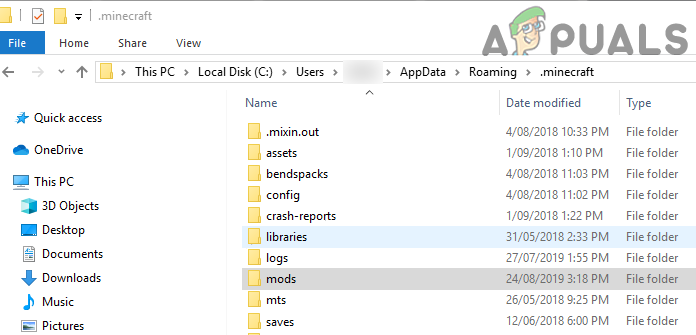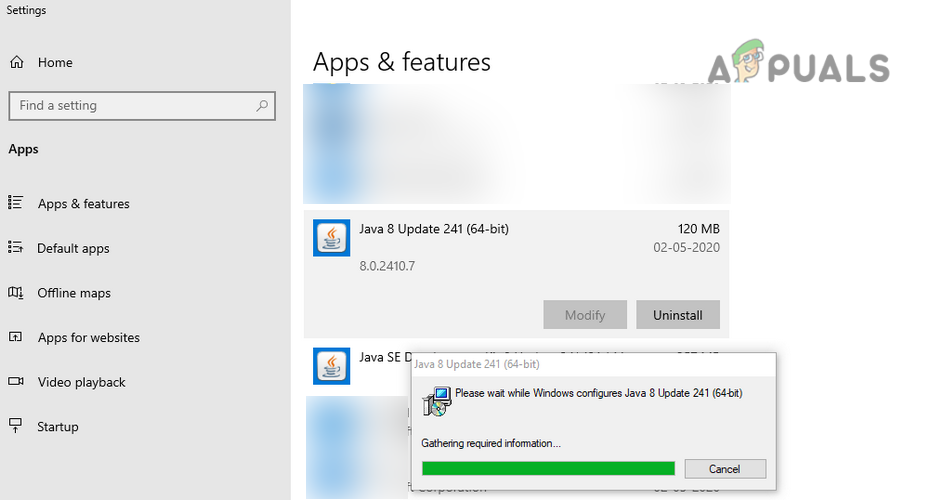I ran into the problem of «URL works in browser, but when I do http-get in java I get a 500 Error».
In my case the problem was that the regular http-get ended up in an infinite redirect loop between /default.aspx and /login.aspx
URL oUrl = new URL(url);
HttpURLConnection con = (HttpURLConnection) oUrl.openConnection();
con.setRequestMethod("GET");
...
int responseCode = con.getResponseCode();
What was happening was: The server serves up a three-part cookie and con.getResponseCode() only used one of the parts. The cookie data in the header looked like this:
header.key = null
value = HTTP/1.1 302 Found
...
header.key = Location
value = /default.aspx
header.key = Set-Cookie
value = WebCom-lbal=qxmgueUmKZvx8zjxPftC/bHT/g/rUrJXyOoX3YKnYJxEHwILnR13ojZmkkocFI7ZzU0aX9pVtJ93yNg=; path=/
value = USE_RESPONSIVE_GUI=1; expires=Wed, 17-Apr-2115 18:22:11 GMT; path=/
value = ASP.NET_SessionId=bf0bxkfawdwfr10ipmvviq3d; path=/; HttpOnly
...
So the server when receiving only a third of the needed data got confused: You’re logged in! No wait, you have to login. No, you’re logged in, …
To work around the infinite redirect-loop I had to manually look for re-directs and manually parse through the header for «Set-cookie» entries.
con = (HttpURLConnection) oUrl.openConnection();
con.setRequestMethod("GET");
...
log.debug("Disable auto-redirect. We have to look at each redirect manually");
con.setInstanceFollowRedirects(false);
....
int responseCode = con.getResponseCode();
With this code the parsing of the cookie, if we get a redirect in the responseCode:
private String getNewCookiesIfAny(String origCookies, HttpURLConnection con) {
String result = null;
String key;
Set<Map.Entry<String, List<String>>> allHeaders = con.getHeaderFields().entrySet();
for (Map.Entry<String, List<String>> header : allHeaders) {
key = header.getKey();
if (key != null && key.equalsIgnoreCase(HttpHeaders.SET_COOKIE)) {
// get the cookie if need, for login
List<String> values = header.getValue();
for (String value : values) {
if (result == null || result.isEmpty()) {
result = value;
} else {
result = result + "; " + value;
}
}
}
}
if (result == null) {
log.debug("Reuse the original cookie");
result = origCookies;
}
return result;
}
The 500 error is caused by loading an incompatiblePHP or Apache plugin. Timeout for external capital. If the server connects with an external provider and the resources can not be accessed, the server will display a 500-error code.
How do I fix error code 500?
How to Fix a 500 Internal Server Error
- Refresh the page. This might seem obvious, but if it’s a temporary loading issue, you might find success if you refresh the page. …
- Come back later. …
- Delete your browser’s cookies. …
- Paste your URL into the website «Down for Everyone or Just Me.»
What does error code 500 mean in Java?
The HyperText Transfer Protocol (HTTP) 500 Internal Server Error server error response code indicates that the server encountered an unexpected condition that prevented it from fulfilling the request.
What is the reason for error 500?
The issue causing the 500 error message could be a permissions or security issue with the server, the website reaching its memory limit, bad files on the site or a bad cache on your device, among other issues. A 500 Internal Server Error is also referred to as a server error, HTTP error and 500 error.
Is a 500 error my fault?
If you try to visit a website and see a “500 Internal Server Error” message, it means something has gone wrong with the website. This isn’t a problem with your browser, your computer, or your internet connection. It’s a problem with the site you’re trying to visit.
How to handle error 500 for Java web application
How to fix 500 internal server error in Java?
Please try clearing the browser cache. If a document containing 500 errors is cached after the cache has been removed, the browser may request a new version of the document. Come back here later. In the meantime, the webmaster can resolve the server problem.
What is the most common 500 error?
500 — Internal Server Error
Perhaps the most common message encountered, this indicates a generic server error that’s displayed when the server cannot determine the exact problem.
What is error code 500 in content search?
When you run an eDiscovery search, if the search continually fails and returns an error message that resembles «Internal server error (500) occurred,» you might have to rerun the search on specific mailbox locations only. (500) Internal Server Error.
How do I troubleshoot 503 error?
7 Steps to Find Root Cause and Resolve the 503 Error:
- Check Resource Usage.
- Check for Ongoing Maintenance.
- Stop Running Processes.
- Reset Firewall.
- Check Server Logs and Fix the Code.
- Restart Your Server and Networking Equipment.
- Check Your DNS.
What is error code 500 on Microsoft?
Microsoft Teams error code 500 can result from a temporary glitch in the application. In this case, restarting is the best thing you can try. So, restart Microsoft Teams and check if you are still facing the problem.
How do you fix a Java error?
How to fix the ‘Java not recognized’ error
- Install or reinstall Java and the JDK on your computer.
- Add Java’s bin directory to the computer’s PATH.
- Restart the command prompt, terminal window or PowerShell.
What is error 500 in Java Spring boot?
The status and error message — 500 — indicates that something is wrong with our server code but actually it’s a client error because the client provided an invalid id.
How to fix 500 internal server error in eclipse?
In this case the jar file was added from an external location so it wasn’t present itn the WEB-INF/lib folder, hence not exported when deploying the application / or generating the the war file. To solve the problem add the jar file to the WEB-INF/lib folder of the project.
What is error code 500 steam authorization failed?
Error code is: 500. This error happens when an incorrect time, date, or time zone is selected on your computer. To eliminate the authorization error, you need to set the correct settings.
What is HTTP status 500 in Apache Tomcat?
HTTP Status 500 – Internal Server Error. Description The server encountered an unexpected condition that prevented it from fulfilling the request.
What is the difference between 500 and 503 error?
500 Internal Server Error Vs 503 Service Unavailable
In many ways, 503 service unavailable is similar to 500 internal server error. Either way, there is a problem with the server meaning the content cannot be loaded. However, the main difference is that with a 500 internal server error this status code is unexpected.
What is the difference between 500 and 503?
While a 500 Internal Server Error indicates an issue preventing the server from handling the request entirely, a 503 Service Unavailable Error indicates that the server is still functioning properly and can process the request, but has opted to return the 503 response code.
What causes 503 server error?
The HyperText Transfer Protocol (HTTP) 503 Service Unavailable server error response code indicates that the server is not ready to handle the request. Common causes are a server that is down for maintenance or that is overloaded.
What is error code 400 and 500?
A first digit of 4 represents a client—side error, with the most common codes in the range of 400 to 404. A first digit of 5 represents a server—side error, with the most common codes in the range of 500 to 510. Because the codes in 400 and 500 range represent errors, they are also referred to as HTTP Error Codes.
What is 400 and 500 HTTP errors?
The main difference between the two is whose fault that error is. A 4xx code indicates an error caused by the user, whereas 5xx codes tell the client that they did everything correctly and it’s the server itself who caused the problem.
What is 500 vs 505 error?
500 & 505 Status Codes
Along with error 503 (service unavailable) and code 500 (internal server error), it is one of the more common error statuses. The 505 (version not supported) code itself means that the server refuses to support the indicated site or simply does not support it.
How to debug Apache internal server error 500?
The simplest way to fix 500 internal server error in Apache is to simply refresh the page. Sometimes you may be requesting a page when the server is being restarted. In such cases, you will get 500 internal error. Sometimes, the server may be overloaded with requests and doesn’t have resources to process your request.
What is error code 500 in Tomcat?
the following appears which i assume means that tomcat is running correctly. i am getting 500 Internal Server error in the browser. A 500 usually means that the Java servlet/JSP is abnormally terminating. Check the logs, but commonly you’ll get a stack trace in your browser.
What are the 3 Java errors?
There are 3 types of Errors: Syntax Error. Runtime Error. Logical Error.
How to fix Java errors in eclipse?
In summary, the steps to fix the Eclipse “No Java Virtual machine was found” error are:
- Edit the eclipse-inst. ini file.
- Add the -vm flag.
- Point the -vm flag to the JDK\bin\java location.
- Save the file.
- Re-run the Eclipse installer.
The error 500: Java.lang.nullpointerexception is an error that is faced by some developers when executing their code. Moreover, end-users also encounter the error 500 when launching an application/game or accessing a particular website. Usually, the following type of error message is shown:
Due to the diversity of the coding world and tools used, it is not possible to cover those in this article but for a developer, the issue is either caused by an error in the code (like calling a function before its initializing) or a server-side error (like using doPost() when doGet() was required). If that is not the case, then reinstalling IDE (as discussed later) may clear the error for a developer.
For an end-user, if the issue is not on the server-side, then the following can be considered as the main factors leading to the error 500:
- Incompatible Browser: If a user is encountering the lang.nullpointerexception when accessing a particular website, then that browser’s incompatibility (like Edge) with that website may cause the error 500 as the website fails to call the function essential for its operations.
- Outdated Java Version on the System: If the system’s Java version is outdated, then its incompatibility with the game, application, or website might cause the error at hand as the Java modules of the system may fail to load.
- Interference from the System’s Firewall: If the system’s firewall is blocking the execution of Java (as a false positive), then the non-execution of the Java modules of the game, application, or website may lead to the error 500.
- Corrupt Installation of the Game or Java: If the game or Java’s installation is corrupt, then the essential game or Java modules may fail to operate and that may result in an error message.
Try Another Browser
If a particular website is failing to load in a browser with ‘Java.lang.nullpointerexception’, then that particular browser’s incompatibility with the website could be the root cause of the error 500 as the website may fail to perform a particular operation, which may be essential for the website’s functionality. Here, trying another browser may clear the error.
- Download and install another browser on your device/system (if already not present).
- Now launch the other browser (like Chrome or Firefox) and steer to the problematic website to check if it is operating fine.
- If not, check if clean booting of the system (especially, any Comcast-related applications) clears the error 500.
If the issue persists, check if the problematic website can be opened on another device (preferably, using another network).
Install Java on the System
Java is available for nearly every platform like smartphones. Windows PCs, Macs, Linux distros, etc. If the problematic application/game (like Minecraft) or website requires Java on a user’s system but is not installed on that system, then that can cause the error message as Java is not available for the execution of the related modules. Here, installing Java on the user’s system may solve the problem.
- Launch a web browser and head to the Java website to download Java.
- Now click on the Agree and Start Free Download.
Download Java - Then select the download as per the OS and system. Keep in mind if the problematic application, game, or website uses a particular version of Java, then make sure to download the required version.
- Afterward, wait till the Java download completes.
- Once downloaded, close all browser windows and any other running applications.
- Now right-click on the downloaded installer of Java and select Run as Administrator.
- Then follow the prompts on the screen to install Java and once done, restart your system.
- Upon restart, set up the Java installation as per the (if any) requirements of the problematic application, game, or website (like Environmental Variable, etc.).
- Now launch the problematic application, game, or website (in a browser) and check the issue is solved.
Update the System’s Java Version to the Latest Build
If the Java version on the system is outdated, it may cause incompatibility with the problematic website or application. Due to this incompatibility, certain Java-related modules may fail to execute properly and cause error 500. Here, updating the Java version of the system to the latest build may solve the problem.
- Press the Windows key and search for Java.
Open Configure Java - Then in the search results, open Configure Java and head to the Update tab.
Click Update Java in the Update Tab - Now click on the Update Now button and wait till the update process completes.
- Once done, restart your system and upon restart, check if the Java.Lang.NullPointerException issue is cleared.
Disable the System’s Firewall
You may encounter this error message if the system’s firewall is blocking the execution of certain Java modules as the blocked Java modules may fail to execute. In this case, disabling the system’s firewall may clear the error 500. For illustration, we will discuss the process of disabling ESET.
Warning:
Proceed at your own risk as disabling the system’s firewall may expose the system, network, and data to threats.
- Right-click on ESET in the hidden icons of the system’s tray and click on Pause Protection.
Pause ESET Protection and Firewall - Then click Yes (if a UAC prompt is shown) and afterward, select the time interval (like 1 hour) for which you want to disable the firewall.
- Now click on Apply and again, right-click on ESET.
- Then select Pause Firewall and afterward, confirm to disable ESET firewall.
- Now check if the system is clear of the error 500.
Reinstall IDE or Code Editor on the System
For a developer, if none of the code or server-side issues are causing the error message, then the corrupt installation of the IDE (like Adobe ColdFusion) or code editor could be the root cause of the issue.
Here, reinstalling the IDE or code editor may clear the error at hand. For illustration, we will discuss the process of reinstalling Adobe ColdFusion on a Windows PC. Before proceeding, make sure to back up essential code snippets or other data.
- Firstly, check if using the default skin or theme (like metallic) of the IDE or Code Editor (like SNAP editor) clears the error.
- If not, right-click Windows and open Apps & Features.
Open Apps & Features - Now expand the Adobe ColdFusion option and select Uninstall.
Uninstall Adobe ColdFusion - Then confirm to uninstall the Adobe ColdFusion and follow the prompts on the screen to uninstall it.
- Once done, restart your system and upon restart, right-click Windows.
- Now select Run and then delete the ColdFusion remnants from the following directories:
temp %temp% %ProgramData% \Program Files \Program Files (x86) appdata
Open the ProgramData Folder - Then reinstall Adobe ColdFusion and check if the error 500 is cleared.
Reinstall the Problematic Game
You may encounter the ‘error 500:Java.lang.nullpointerexception’ on a Java-based game (like Minecraft) if the game’s installation is corrupt as the game’s modules are not able to perform the designated role. In this scenario, reinstalling the problematic game may clear the error at hand. For elucidation, we will discuss the process of reinstalling Minecraft.
- Right-click Windows and open Run.
Open the Run Command Box from the Quick Access Menu - Now navigate to the following:
%appdata%
- Now open the .Minecraft folder and backup the Saves folder (to save the worlds you have been playing).
Copy the Saves Folder to the Minecraft - Then click Windows and search for Minecraft.
- Now right-click on it and select Uninstall.
Uninstall Minecraft - Then confirm to uninstall Minecraft and follow the prompts on the screen to uninstall the game.
- Once uninstalled, reboot your system and upon reboot, steer to the following path in Run:
%appdata%
- Then delete the .Minecraft folder and afterward, steer to the following path in Run:
AppData
Delete the Minecraft Folder in the Roaming Directory - Then delete all the Minecraft-related folders from all of the three following directories:
Local LocalLow Roaming
- Now reinstall Minecraft by using the official Minecraft installer and once reinstalled, check if the game is clear of the error 500.
Reinstall Java on the System
If the Java’s installation on your system itself is corrupt, then that can also be the cause of the issue as many of the Java libraries may not be available to the problematic game, application, or website. In this scenario, reinstalling Java on your system may clear the error 500. For illustration, we will discuss the process of reinstalling Java on a Windows system.
- Right-click Windows and open Apps & Features.
- Now expand the Java option and click on Uninstall.
Uninstall Java 64-bit Version - Then confirm to uninstall Java and follow the prompts on the screen to uninstall Java.
- Once uninstalled, restart your system, and upon restart, open the Run command box by pressing Windows + R keys.
- Now delete the Java remnants from the following paths:
C:\Program Files\Java\ C:\ProgramData\Oracle\Java C:\Program Files (x86)\Common Files\Java C:\Program Files (x86)\Oracle\Java \ProgramData AppData temp %temp%
- Afterward, disable the system’s firewall (as discussed earlier) and reinstall the latest Java version (or the Java version required by the game, application, or website).
- Once reinstalled, restart your system and upon restart, hopefully, the system would be cleared of the error 500:Java.lang.nullpointerexception.
- If not, check if copying the msvcr71.dll file (from another working computer) to the following path clears the error (if the issue is occurring in a browser):
C:\windows\system32
If the issue persists and occurs with a particular website, application, or game, then you may contact support to check the backend for any server-side issues.
Kevin Arrows
Kevin Arrows is a highly experienced and knowledgeable technology specialist with over a decade of industry experience. He holds a Microsoft Certified Technology Specialist (MCTS) certification and has a deep passion for staying up-to-date on the latest tech developments. Kevin has written extensively on a wide range of tech-related topics, showcasing his expertise and knowledge in areas such as software development, cybersecurity, and cloud computing. His contributions to the tech field have been widely recognized and respected by his peers, and he is highly regarded for his ability to explain complex technical concepts in a clear and concise manner.
I keep getting this error when trying to access my .wadl file on my EC2 server (deployed using Elastic Beanstalk). Any ideas what it means/ how to fix it?
type Exception report
message
description The server encountered an internal error () that prevented it from fulfilling this request.
exception
javax.servlet.ServletException: Servlet.init() for servlet ServletAdaptor threw exception
org.apache.catalina.authenticator.AuthenticatorBase.invoke(AuthenticatorBase.java:472)
org.apache.catalina.valves.ErrorReportValve.invoke(ErrorReportValve.java:98)
org.apache.catalina.valves.RemoteIpValve.invoke(RemoteIpValve.java:680)
org.apache.catalina.valves.AccessLogValve.invoke(AccessLogValve.java:928)
org.apache.catalina.connector.CoyoteAdapter.service(CoyoteAdapter.java:407)
org.apache.coyote.http11.AbstractHttp11Processor.process(AbstractHttp11Processor.java:987)
org.apache.coyote.AbstractProtocol$AbstractConnectionHandler.process(AbstractProtocol.java:539)
org.apache.tomcat.util.net.JIoEndpoint$SocketProcessor.run(JIoEndpoint.java:298)
java.util.concurrent.ThreadPoolExecutor.runWorker(ThreadPoolExecutor.java:1110)
java.util.concurrent.ThreadPoolExecutor$Worker.run(ThreadPoolExecutor.java:603)
java.lang.Thread.run(Thread.java:636)
root cause
java.lang.NoClassDefFoundError: javax/persistence/criteria/Expression
java.lang.Class.getDeclaredConstructors0(Native Method)
java.lang.Class.privateGetDeclaredConstructors(Class.java:2406)
java.lang.Class.getConstructors(Class.java:1476)
com.sun.jersey.server.impl.modelapi.annotation.IntrospectionModeller.createResource(IntrospectionModeller.java:111)
com.sun.jersey.server.impl.application.WebApplicationImpl.getAbstractResource(WebApplicationImpl.java:745)
com.sun.jersey.server.impl.application.WebApplicationImpl.createAbstractResourceModelStructures(WebApplicationImpl.java:1522)
com.sun.jersey.server.impl.application.WebApplicationImpl._initiate(WebApplicationImpl.java:1295)
com.sun.jersey.server.impl.application.WebApplicationImpl.access$700(WebApplicationImpl.java:169)
com.sun.jersey.server.impl.application.WebApplicationImpl$13.f(WebApplicationImpl.java:775)
com.sun.jersey.server.impl.application.WebApplicationImpl$13.f(WebApplicationImpl.java:771)
com.sun.jersey.spi.inject.Errors.processWithErrors(Errors.java:193)
com.sun.jersey.server.impl.application.WebApplicationImpl.initiate(WebApplicationImpl.java:771)
com.sun.jersey.server.impl.application.WebApplicationImpl.initiate(WebApplicationImpl.java:766)
com.sun.jersey.spi.container.servlet.ServletContainer.initiate(ServletContainer.java:488)
com.sun.jersey.spi.container.servlet.ServletContainer$InternalWebComponent.initiate(ServletContainer.java:318)
com.sun.jersey.spi.container.servlet.WebComponent.load(WebComponent.java:609)
com.sun.jersey.spi.container.servlet.WebComponent.init(WebComponent.java:210)
com.sun.jersey.spi.container.servlet.ServletContainer.init(ServletContainer.java:373)
com.sun.jersey.spi.container.servlet.ServletContainer.init(ServletContainer.java:556)
javax.servlet.GenericServlet.init(GenericServlet.java:160)
org.apache.catalina.authenticator.AuthenticatorBase.invoke(AuthenticatorBase.java:472)
org.apache.catalina.valves.ErrorReportValve.invoke(ErrorReportValve.java:98)
org.apache.catalina.valves.RemoteIpValve.invoke(RemoteIpValve.java:680)
org.apache.catalina.valves.AccessLogValve.invoke(AccessLogValve.java:928)
org.apache.catalina.connector.CoyoteAdapter.service(CoyoteAdapter.java:407)
org.apache.coyote.http11.AbstractHttp11Processor.process(AbstractHttp11Processor.java:987)
org.apache.coyote.AbstractProtocol$AbstractConnectionHandler.process(AbstractProtocol.java:539)
org.apache.tomcat.util.net.JIoEndpoint$SocketProcessor.run(JIoEndpoint.java:298)
java.util.concurrent.ThreadPoolExecutor.runWorker(ThreadPoolExecutor.java:1110)
java.util.concurrent.ThreadPoolExecutor$Worker.run(ThreadPoolExecutor.java:603)
java.lang.Thread.run(Thread.java:636)
root cause
java.lang.ClassNotFoundException: javax.persistence.criteria.Expression
org.apache.catalina.loader.WebappClassLoader.loadClass(WebappClassLoader.java:1688)
org.apache.catalina.loader.WebappClassLoader.loadClass(WebappClassLoader.java:1533)
java.lang.Class.getDeclaredConstructors0(Native Method)
java.lang.Class.privateGetDeclaredConstructors(Class.java:2406)
java.lang.Class.getConstructors(Class.java:1476)
com.sun.jersey.server.impl.modelapi.annotation.IntrospectionModeller.createResource(IntrospectionModeller.java:111)
com.sun.jersey.server.impl.application.WebApplicationImpl.getAbstractResource(WebApplicationImpl.java:745)
com.sun.jersey.server.impl.application.WebApplicationImpl.createAbstractResourceModelStructures(WebApplicationImpl.java:1522)
com.sun.jersey.server.impl.application.WebApplicationImpl._initiate(WebApplicationImpl.java:1295)
com.sun.jersey.server.impl.application.WebApplicationImpl.access$700(WebApplicationImpl.java:169)
com.sun.jersey.server.impl.application.WebApplicationImpl$13.f(WebApplicationImpl.java:775)
com.sun.jersey.server.impl.application.WebApplicationImpl$13.f(WebApplicationImpl.java:771)
com.sun.jersey.spi.inject.Errors.processWithErrors(Errors.java:193)
com.sun.jersey.server.impl.application.WebApplicationImpl.initiate(WebApplicationImpl.java:771)
com.sun.jersey.server.impl.application.WebApplicationImpl.initiate(WebApplicationImpl.java:766)
com.sun.jersey.spi.container.servlet.ServletContainer.initiate(ServletContainer.java:488)
com.sun.jersey.spi.container.servlet.ServletContainer$InternalWebComponent.initiate(ServletContainer.java:318)
com.sun.jersey.spi.container.servlet.WebComponent.load(WebComponent.java:609)
com.sun.jersey.spi.container.servlet.WebComponent.init(WebComponent.java:210)
com.sun.jersey.spi.container.servlet.ServletContainer.init(ServletContainer.java:373)
com.sun.jersey.spi.container.servlet.ServletContainer.init(ServletContainer.java:556)
javax.servlet.GenericServlet.init(GenericServlet.java:160)
org.apache.catalina.authenticator.AuthenticatorBase.invoke(AuthenticatorBase.java:472)
org.apache.catalina.valves.ErrorReportValve.invoke(ErrorReportValve.java:98)
org.apache.catalina.valves.RemoteIpValve.invoke(RemoteIpValve.java:680)
org.apache.catalina.valves.AccessLogValve.invoke(AccessLogValve.java:928)
org.apache.catalina.connector.CoyoteAdapter.service(CoyoteAdapter.java:407)
org.apache.coyote.http11.AbstractHttp11Processor.process(AbstractHttp11Processor.java:987)
org.apache.coyote.AbstractProtocol$AbstractConnectionHandler.process(AbstractProtocol.java:539)
org.apache.tomcat.util.net.JIoEndpoint$SocketProcessor.run(JIoEndpoint.java:298)
java.util.concurrent.ThreadPoolExecutor.runWorker(ThreadPoolExecutor.java:1110)
java.util.concurrent.ThreadPoolExecutor$Worker.run(ThreadPoolExecutor.java:603)
java.lang.Thread.run(Thread.java:636)
note The full stack trace of the root cause is available in the Apache Tomcat/7.0.23 logs.
toniedzwiedz
17.9k9 gold badges86 silver badges131 bronze badges
asked Jul 16, 2012 at 16:31
2
Error code 500 is usually thrown when there is some sort of error in the server,
like an uncaught exception.
I mentioned this example as this is your case, see this part of the log:
java.lang.ClassNotFoundException: javax.persistence.criteria.Expression org.apache.catalina.loader.WebappClassLoader.loadClass(WebappClassLoader.java:1688) org.apache.catalina.loader.WebappClassLoader.loadClass(WebappClassLoader.java:153
You’re probably using JPA in your code, but the JPA jars are not in your WEB-INF/lib directory.
Please check your webapp structure , fix, and redploy.
answered Jul 16, 2012 at 17:47
Yair ZaslavskyYair Zaslavsky
4,0894 gold badges20 silver badges27 bronze badges
В этой статье мы рассмотрим пример Rest API на Java, который может вызывать ошибку Server Error 500. Будем рассматривать этот пример на примере Spring Boot.
Что такое Rest API?
Rest API — это интерфейс программирования приложения, который используется для взаимодействия между клиентом и сервером. Он принимает запросы от клиента и возвращает ответы, используя в качестве протокола HTTP.
Пример Rest API на Java
Давайте рассмотрим пример простого Rest API на Java, который использует Spring Boot. Это пример REST API, который позволяет получать и сохранять объекты типа «Person».
Мы начнем с создания проекта Spring Boot с помощью Maven. Добавим следующие зависимости в файл pom.xml :
<dependencies>
<dependency>
<groupId>org.springframework.boot</groupId>
<artifactId>spring-boot-starter-data-jpa</artifactId>
</dependency>
<dependency>
<groupId>org.springframework.boot</groupId>
<artifactId>spring-boot-starter-web</artifactId>
</dependency>
<dependency>
<groupId>org.hsqldb</groupId>
<artifactId>hsqldb</artifactId>
<scope>runtime</scope>
</dependency>
</dependencies>
Эти зависимости являются основными для Spring Boot, которые позволяют использовать JPA, создавать веб-сервисы и использовать In-memory базу данных HSQL.
Далее, мы создадим модель для наших объектов «Person»:
@Entity
public class Person {
@Id
@GeneratedValue
private Long id;
private String firstName;
private String lastName;
public Long getId() {
return id;
}
public void setId(Long id) {
this.id = id;
}
public String getFirstName() {
return firstName;
}
public void setFirstName(String firstName) {
this.firstName = firstName;
}
public String getLastName() {
return lastName;
}
public void setLastName(String lastName) {
this.lastName = lastName;
}
}
С помощью аннотации @Entity мы создали сущность базы данных. Аннотация @Id указывает, что это поле является первичным ключом. Благодаря аннотации @GeneratedValue, значения поля «id» будут автоматически генерироваться базой данных. Затем мы определяем поля «firstName» и «lastName».
Теперь мы продолжим и создадим репозиторий для «Person»:
@Repository
public interface PersonRepository extends JpaRepository<Person, Long> {
}
Класс PersonRepository создает репозиторий, позволяющий выполнять CRUD (Create, Read, Update, Delete) операции.
Создадим контроллер Rest:
@RestController
@RequestMapping("/api")
public class PersonController {
private final PersonRepository repository;
public PersonController(PersonRepository repository) {
this.repository = repository;
}
@GetMapping("/person/{id}")
public Person getPersonById(@PathVariable Long id) {
return repository.findById(id)
.orElseThrow(() -> new ResponseStatusException(HttpStatus.NOT_FOUND, "Person not found"));
}
@PostMapping("/person")
public Person savePerson(@RequestBody Person person) {
return repository.save(person);
}
}
Класс PersonController является контроллером Rest, который будет обрабатывать запросы от клиента. Аннотация @RestController указывает, что это контроллер Rest. Аннотация @RequestMapping указывает базовый URL, на который будут поступать запросы.
@GetMapping(«/person/{id}») обрабатывает GET-запрос на получение данных по id объекта «Person». @PathVariable указывает, что переменная «id» является частью URL-адреса.
@PostMapping(«/person») обрабатывает POST-запрос на сохранение новой записи об «Person». @RequestBody указывает, что тело запроса будет содержать данные о пользователе в формате JSON.
Теперь посмотрим сценарий, который может привести к ошибке Server Error 500 при использовании этого Rest API.
Ошибка Server Error 500 в Rest API
Server Error 500 означает, что на сервере произошла ошибка, которая не позволяет ему обработать запрос. Это может быть связано с неверными параметрами запроса, ошибками при обработке данных или внутренними проблемами на сервере.
Одним из возможных сценариев, который может привести к ошибке Server Error 500 при использовании нашего Rest API, является попытка сохранить запись об «Person», подавая запрос, содержащий null-значение в поле «firstName». Следующий код является примером такого запроса:
POST /api/person HTTP/1.1
Content-Type: application/json
{
"firstName": null,
"lastName": "Doe"
}
На Java этот запрос может быть обработан следующим образом:
@PostMapping("/person")
public Person savePerson(@RequestBody Person person) {
if(person.getFirstName() == null) {
throw new ResponseStatusException(HttpStatus.BAD_REQUEST, "First name is required");
}
return repository.save(person);
}
Мы добавили проверку на null-значение в поле «firstName». Если это значение равно null, сервер вернет ошибку ResponseStatusException со статусом BAD_REQUEST.
Теперь мы можем протестировать наш Rest API, используя этот запрос. Если мы отправим запрос с null-значением в поле «firstName», сервер вернет ошибку BAD_REQUEST.
Заключение
В этой статье мы рассмотрели пример Rest API на Java, который может вызывать ошибку Server Error 500. Мы использовали Spring Boot и In-memory базу данных HSQL для создания простого Rest API, который может получать и сохранять объекты «Person». Мы также рассмотрели сценарий, который может привести к ошибке Server Error 500, и добавили проверку, чтобы эту ошибку можно было избежать.
Надеемся, что эта статья помогла вам лучше понять, как создавать и тестировать Rest API на Java. Если у вас есть какие-либо вопросы, пожалуйста, оставьте их в комментариях.

